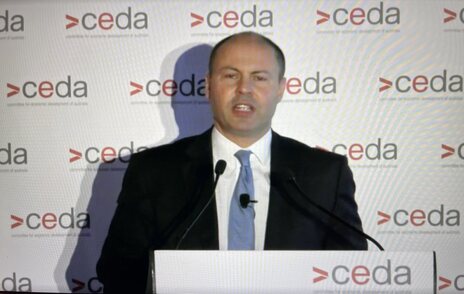By Neeraj Nanda
MELBOURNE, 28 June 2021: Australia’s population is growing slower and aging faster than expected, the Australian economy will continue to grow, but slower than previously thought. Growth will continue to be highly dependent on productivity gains and while Australia’s debt is sustainable and low by international standards, the aging of our population will put significant pressures on both revenue and expenditure. These are the three main points focussed on in the ‘Intergenerational Report 2021’ launched today by the Treasurer Hon Josh Frydenberg MP in Melbourne.
Addressing the gathering at the launch the Treasurer said, ” Australia’s population growth is now 0.1 % and the fertility rate is 1.65, which will go down to 1.58. So, it is below replacement level, and hence skilled migration will be absolutely critical for the economy.
We are working with the universities to bring back international students,” he said.
#SATnews @shrimanji @PradeepKTaneja @manbirkohli @ceda_news #IGR @JoshFrydenberg @NRI_Affairs
Australia's Treasurer Hon Josh Frydenberg MP speaks at the launch of the Intergeneral Report 2021 in Melbourne on 28 June 2021.https://t.co/GQmu2sYN4X— South Asia Times (@southasiatimes) June 28, 2021
A summary of the Report posted on the Treasurer’s site is as follows:
Population:
As a result of COVID-19, this is the first IGR where the size of the population has been revised down.
Closed borders have seen more people leave than come to our shores over the last 12 months which has seen population growth at just 0.1 percent, the lowest in 100 years.
Migration levels are forecast to get back to where they were in 2024-25, but do not recover the ground lost during COVID-19.
As a result, Australia’s population is expected to reach 38.8 million in 2060-61, six years later than was forecast in the last IGR.
On top of this a lower than expected migration intake contributes to the ageing of the population as the average age of migrants is below that of the existing population.
Economic growth:
Australia’s economy is expected to be more than two and a half times bigger in 2060-61 than it is today, with real GDP per person growing at an average annual rate of 1.5 per cent compared with 1.6 per cent over the last 40 years.
To generate this growth, it is assumed that productivity growth will maintain its 30 year average of 1.5 per cent.
This, however, will require an improvement in Australia’s recent productivity performance of 1.2 per cent over the most recent cycle.
Further investments in skills, infrastructure and digital transformation are required together with reforms generating red tape reduction, more flexible workplaces, increased business investment and a more efficient tax system.
With productivity responsible for over 80 per cent of Australia’s national income growth over the past 30 years, the task is obvious and the choice is clear.
If we want to maintain our living standards, generate higher wages and create more jobs, Australia has no alternative other than to pursue economic reform, much of which is hard and contested.
Environment:
The changing climate will also affect the economy and the budget.
The physical and transitional effects of climate change, the impacts of mitigation efforts and the benefits of early adaptation measures will all affect the economy and the budget over time.
The transition to lower carbon emissions globally will mean that some sectors will need to adjust to falling demand for some exports, while new opportunities will be created in other sectors.
The effects will depend on domestic and global actions, as well as the pace and extent of climate change.
Australia is playing its part on climate change, having met our 2020 commitments and being on track to meet and beat our 2030 target.
Sustainable debt:
Deficits are expected to decline from 7.8 per cent of GDP today to 0.7 per cent in 2036-37, before widening to 2.3 per cent in 2060-61.
It’s a trajectory similar to many of the previous IGRs reflecting the impact of an ageing population and existing policy settings, however, the budget position is significantly better than projected in most past IGRs.
The Howard Government’s 2002 and 2007 IGRs forecast deficits at the end of the 40 year period of 7 per cent and 5 per cent respectively and the Rudd Government’s 2010 IGR forecast a deficit of 4 per cent in 2050.
Only in 2015 was a surplus forecast of 0.5 per cent at the end of the period, but that was in the absence of COVID, the biggest economic shock since the Great Depression.
In this year’s IGR, health accounts for the biggest shift in Government spending over the next 40 years, going from 4.6 to 6.2 per cent of GDP, with aged care going from 1.2 to 2.1 per cent of GDP and spending on the NDIS at 1.4 per cent of GDP, nearly 30 per cent higher than what was forecast in the 2015 IGR.
Significantly, as expenditure rises, the tax take doesn’t go beyond 23.9 per cent of GDP, the self-imposed cap the Coalition put in place.
Growing the economy is Australia’s pathway to Budget repair, not austerity or higher taxes.
Only by growing the economy can we continue to guarantee the essential services Australians rely on.
We are relatively well placed, but at the same time, there are warning signs.
There remains much work to do be done.






